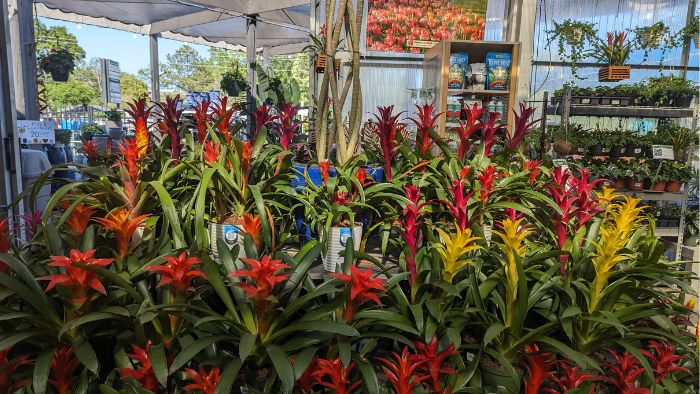Bromeliads, with their vibrant blooms and unique air-filled cups, are captivating indoor plants. But beyond their exotic looks, bromeliads are surprisingly easy to care for, making them perfect for both seasoned gardeners and curious beginners. This essential care guide will equip you with the knowledge to cultivate thriving bromeliads in your own home.
Unveiling the Bromeliad: Rainforest Gems
Imagine a plant that thrives on minimal soil, absorbs nutrients through its leaves, and boasts a central cup that collects water. That’s the essence of a bromeliad! Native to tropical rainforests of Central and South America, these air plants (also known as epiphytes) have adapted to cling to trees and branches, forming an intricate part of the rainforest ecosystem. There are over 5,600 known bromeliad varieties, each boasting a spectrum of colors, shapes, and textures. From the fiery reds and oranges of Guzmania to the spiky purple blooms of Vriesea, there’s a bromeliad to suit every taste.

Bringing the Tropics Home: Creating the Perfect Environment
While bromeliads are adaptable, mimicking their natural environment will encourage optimal growth and stunning blooms. Here’s what you need to know:
- Light: Imagine the dappled sunlight filtering through a rainforest canopy. Bromeliads prefer bright, indirect light. Avoid the harsh afternoon sun, which can scorch the leaves. East or north-facing windows are ideal placements.
- Temperature and Humidity: Think warm and steamy. Bromeliads thrive in temperatures between 60°F and 80°F (15°C – 27°C) with moderate to high humidity levels (around 50-70%). If your home is drier, consider grouping your bromeliads together or placing them on a pebble tray filled with water.
- Watering: Bromeliads have two watering requirements. Fill the central cup (called a ‘tank’) with rainwater or filtered water, allowing the base to dry out slightly between fillings. Additionally, water the soil moderately, allowing excess water to drain to prevent root rot.
Expert Tip: According to a study by the University of Florida [1], overwatering is the leading cause of bromeliad decline. When in doubt, underwater slightly. Bromeliads can recover from underwatering more readily than from root rot caused by overwatering.
[1] Source: University of Florida IFAS Extension, Bromeliad Care, Publication #HS565 (2001)
Beyond the Basics: Unlocking Bromeliad Brilliance
Now that you’ve mastered the fundamentals, here are some insights to elevate your bromeliad care:
- Fertilization: Bromeliads are not heavy feeders. A weak fertilizer solution applied monthly during the growing season (spring and summer) is sufficient.
- Air Circulation: Good air circulation is essential to prevent fungal diseases. Aim for gentle air movement around your plants.
- The Bromeliad Dance: After flowering, the central ‘parent’ plant will slowly decline. However, fear not! Pups, or offsets, will sprout around the base. These can be carefully separated and repotted to continue the bromeliad legacy.
Bromeliads: More Than Just Beauty
Bromeliads are air purifiers, eliminating toxins like formaldehyde and benzene from your indoor environment [2]. Research by Texas A&M University even suggests that bromeliads can help reduce stress and anxiety [3]. So, beyond their undeniable beauty, bromeliads contribute to a healthier and more relaxed home atmosphere.
[2] Source: National Aeronautics and Space Administration (NASA), Clean Air Study https://en.wikipedia.org/wiki/NASA_Clean_Air_Study [3] Source: Texas A&M University College of Agriculture and Life Sciences, Study: Indoor Plants Can Reduce Stress Hormones
With a little TLC, bromeliads will reward you with vibrant blooms and enduring beauty. So, why not embrace a touch of the tropics in your home and embark on your bromeliad-growing adventure?




